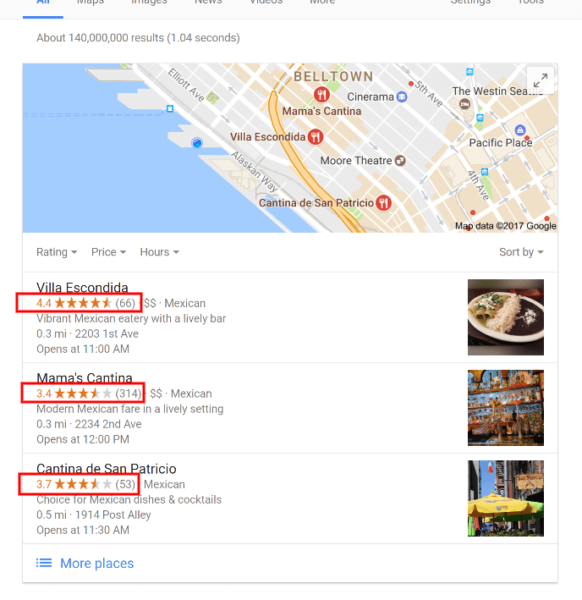2017 growth hacks: Optimizing organic market share
Columnist Lori Weiman continues her series on search marketing growth hacks with an installment on improving organic search performance.

Welcome back to my eight-part series providing growth hacks to search marketers. I began by sharing growth hacks for protecting your valuable branded keywords in PPC, including teaming up with affiliates and knocking out unwanted competitors with search engine complaints.
Next, I discussed how to use competitive data to boost paid market share. This included identifying top keywords to monitor, gathering quantitative and qualitative results on competitors and analyzing macro-level topics such as geotargeting and affiliates.
Now let’s focus on organic. I’ll assume you’re already experienced with SEO best practices. But you might not know how to fine-tune your SEO efforts using competitive insights and keyword monitoring. You can achieve big gains in market share for your websites by monitoring keywords.
The five market share growth hacks below come from what I’ve learned from The Search Monitor (disclosure: my employer), which monitors millions of organic listings at the local and international level.
Let’s dive in!
Hack #1: Improve page share
Page share means the number of listings where your URL is indexed out of the total listings that appear. For example, if you are indexed on three search results in the top 10, then you have a 30 percent page share.
To improve your page share, perform these steps:
- Measure your own page share.
- Measure your competitor’s page share by doing a competitive audit on three to five competitors using a tool that monitors rank and the number of listings on your organic keywords.
- Identify the list of keywords where your competitors have a higher page share than you do, as this indicates that the competitors have more visibility and more clicks.
This creates a list of keywords to prioritize.
From this list, carve off the group of keywords where the impression volume is the highest and evaluate using your usual SEO best practices on how to improve your rank and number of listings on these keywords. To get a fast result, make sure that these keywords are part of your paid campaigns to boost rank instantly. This buys you time while you’re working on SEO.
Hack #2: Optimize for SERP sections
The organic SERP (search engine results page) has become a collage of different sections appearing dynamically based on keyword searches (often referred to as “blended results” or “Universal Search“). If your goal is to appear at the top of the page, but you are optimizing for a section that is below the fold for a particular keyword, then your goal is not achievable.
Your objective should be to optimize your share for the sections that are most relevant for your business and that have the highest page rank. For example, the map is the first section for some searches, while the main organic is the first section for others.
Here’s a quick overview of some of the important organic sections:
- Organic listings
- Images
- Videos
- Local (map)
- News
- Books
- Hotels
- Knowledge Graph Profiles
First, identify the page layouts for your target keywords. You can do this manually or by using a monitoring tool that breaks down the layout styles for you.
Second, review your rank and position in the page sections that appear closest to the top.
For example, if video results are important for your business, are you appearing there? Or, if the local/map section appears first for your target keywords, are you present there? Local listings are especially important for brick-and-mortar businesses.
After you self-diagnose, prioritize a keyword list for which you’re absent from your desired section, or you appear below key competitors. Share this list with your SEO team to increase your site’s relevance for these sections.
Hack #3: Indexed content
Another hack to improve your organic presence is to study the type of content that is boosting your competition’s rankings.
Here’s the data you need for this exercise:
- Content listings that are indexed by Google.
- Keywords where each piece of content has ranking (to calculate impressions).
- Impressions for each piece of content (impressions = the total impressions or search volume for all keywords where the piece of content is ranking).
Sort your data by number of impressions. Then, review your competitor’s content with the greatest impressions or search volume to determine what you can adapt for yourself.
Now, let’s focus on the specific copy in these competitive listings. Your goal is to use this intel to make your own listing copy more competitive. The formula here is pretty straightforward:
- Look at the headline and description being pulled into the listing by the engines.
- Summarize the different messaging and offers they use.
- Adjust your on-page SEO to display competitive listing copy.
Hack #4: Organic reputation
This hack focuses on a crucial element of organic listings for many businesses: reviews and ratings. These appear as a star rating (out of five) and number of Google reviews in the local/map section or right-side info panel.
If these apply to your business, it’s crucial to understand how your reviews and ratings appear, as well as how they compare to those of your competitors. You also need to learn how they change over time compared to your competitors.
Gather the review and rating data that the engines display on your organic listings, then work to improve your scores by encouraging your satisfied users to submit ratings and reviews. If you have multiple locations and need to prioritize, focus on the listings with a low number of reviews and with lower review scores than your competitors, as positive reviews will have a bigger impact on listing with fewer ratings.
Hack #5: Local
It’s important to remember that your organic market share can — and often does — differ by the location of the searcher.
My last hack for improving organic share is aimed at business with a local focus, whether it be brick-and-mortar stores or just businesses who have different offerings by geography. Examples include auto dealerships, insurance offices, banks, delivery companies, and of course, retail chains.
Start by building a list of your priority geographies and learning the impressions, rank and overall market share for each location as compared to your competitors. Prioritize locations that are most important to your business and where you’re the weakest versus competitors. The fix here might be as simple as intelligently adding these location names to your web pages and off-site content.
Final thoughts
The five growth hacks presented here will help you appear more often, and higher up, in the desired sections of the organic SERP. They all start with knowing which competitors appear above you, where, how often and how they do it. Only then can you tweak your on-page and off-page SEO tactics, and reallocate resources, to increase your organic market share.
Stay tuned for my next article, as I combine my growth hacks for paid and organic into a cohesive strategy aimed at dominating the full-page results.
Contributing authors are invited to create content for Search Engine Land and are chosen for their expertise and contribution to the search community. Our contributors work under the oversight of the editorial staff and contributions are checked for quality and relevance to our readers. The opinions they express are their own.
Related stories
New on Search Engine Land
